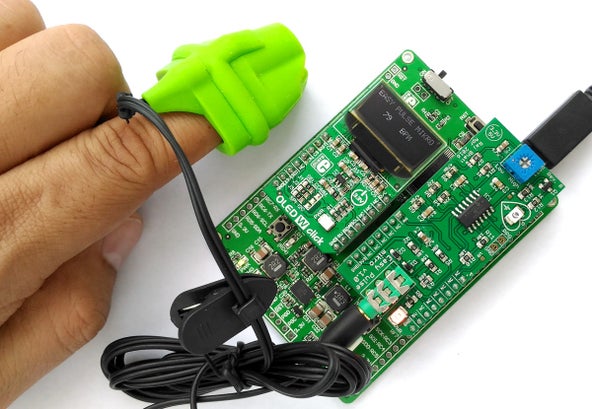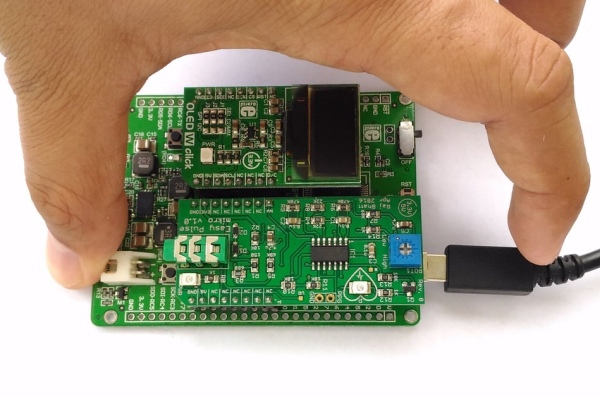This instructable describes how to build a stand-alone heart rate meter using Easy Pulse mikro sensor and mikroElektronika‘s clicker 2 for PIC18FJ board. An OLED W click board is also used to display the heart beat rate in beats per minute (BPM). The above figure shows all the things you would need to build this project.

Step 1: Setup, Firmware, and Output

The clicker 2 development board features Microchip’s powerful 8-bit PIC18F87J50 microcontroller, preprogrammed with an USB bootloader, and two mikroBus sockets to receive add-on boards. For this demo project, the OLED W click board is inserted into socket 1 and Easy Pulse mikro to socket 2, as shown below.
The firmware for this project can be downloaded from the following link. It contains both the source code (written in mikroC Pro for PIC) and HEX file.
Clicker2_PulseMeter_EasyPulse_Firmware
The flow diagram shown here describes how the pulse rate is computed from the PPG waveform. The PIC microcontroller reads in 600 analog samples of the PPG waveform at 5 millisecond sampling interval and finds three consecutive peaks in the PPG waveform. The pulse rate can then be computed from the time interval between any two successive peaks.
Source: Stand-alone Heart Rate Meter
